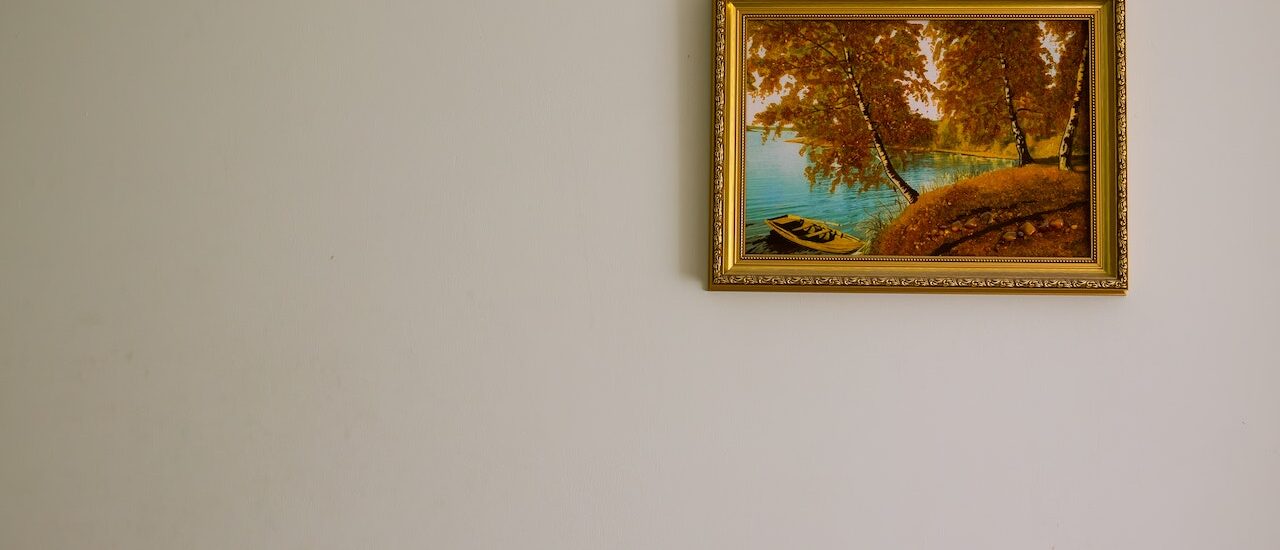Artwork is more than just a piece of decoration; it’s an embodiment of emotion, history, and, often, significant financial value. Whether you’re an art collector, a gallery owner, or someone who simply cherishes a few cherished pieces, ensuring their safety during a move is paramount.
The process of packing and moving artwork demands meticulous attention to detail, specialized knowledge, and the right materials. At Stride Movers, we understand the intricacies involved in relocating such precious items.
This guide will delve deep into the world of art relocation, offering insights and expert advice to ensure your artwork reaches its new destination unscathed. Whether you’re moving across the street or across the country, let’s explore how to pack and move your artwork safely, ensuring its preservation for generations to come.
Understanding the Value of Your Artwork
A canvas art piece is not just a mere decoration; it’s a reflection of an artist’s soul, a collector’s passion, and, often, a significant financial investment. Recognizing the value of artwork goes beyond its aesthetic appeal. It’s crucial to understand both its emotional weight and its monetary worth, especially when considering a move.
- Emotional Connection: Many artworks carry personal stories and memories or represent significant milestones in one’s life.
- Financial Investment: Art, especially from renowned artists or antique pieces, can be worth thousands or even millions.
- Historical Significance: Some artworks have historical relevance, making them invaluable.
- Unique Craftsmanship: Handmade or one-of-a-kind pieces can’t be easily replaced.
- Appraisal Importance: Getting an artwork appraised gives a clear picture of its market value, which is crucial for insurance purposes.
- Protection During Transit: Understanding its value ensures you take extra precautions during packing and moving.
- Resale Value: Knowing the worth of your artwork can be beneficial if you ever decide to sell or auction it in the future.
Materials You’ll Need
Packing artwork demands precision, care, and the right materials, whether you’re looking to pack a canvas painting or an entire sculpture.
Using subpar or inappropriate packing supplies can lead to damage, diminishing the artwork’s value and beauty. Ensuring you have the best materials on hand is the first step in safeguarding your precious pieces during a move.
- Acid-Free Paper: Ideal for wrapping paintings and prints to prevent yellowing or deterioration.
- Bubble Wrap: Provides cushioning against shocks and bumps. Always use it with the bubbles facing outward to prevent impressions on the artwork.
- Sturdy Cardboard or Foam Board: Offers a solid backing or front protection for framed pieces.
- Artwork Crates: Custom wooden crates can be used for high-value or especially fragile items.
- Packing Tape: Heavy-duty packing tape, or even masking tape for lighter items, ensures moving boxes and protective wrappings stay secure.
- Corner Protectors: Essential for framed artworks to prevent corner damage.
- Supplier Sources: Art supply stores, specialized moving companies like Stride Movers, or online retailers are excellent places to find quality packing materials tailored for artwork.
Preparation Before Packing
Before diving into the packing process, it’s essential to lay the groundwork to ensure your artwork’s safety and integrity. Proper preparation not only aids in the smooth transition of your pieces but also provides a safety net in the rare event of damage or loss.
1. Gentle Cleaning
Begin by cleaning your artwork. For paintings, use a soft brush to gently remove any dust from the surface. Sculptures or three-dimensional pieces might require a slightly damp cloth, but always ensure the material can handle moisture. Remember, some artworks, especially older ones, might be sensitive to even the gentlest cleaning, so always err on the side of caution.
2. Documentation
Create a detailed inventory of all the artwork you’re moving. This should include the artist’s name, the artwork’s title, dimensions, medium, and any other pertinent details. This documentation will be invaluable for both organizational and insurance purposes.
3. Photographic Records
Take clear, high-resolution photographs of each piece from multiple angles. Ensure you capture any existing imperfections or damages. These photographs serve as a ‘before’ snapshot, which can be crucial if you need to file an insurance claim post-move.
4. Appraisal Documents
If you’ve had your artwork appraised, ensure you have copies of these appraisals. They provide a benchmark for the artwork’s value and can be essential for insurance coverage and claims.
6. Insurance Review
Before moving, review your insurance policies. If you don’t already have coverage for your artwork during a move, now’s the time to get it. Ensure your policy covers the appraised value of each piece.
7. Special Handling Notes
If certain pieces require specific handling or have unique vulnerabilities, make a note of these. Attach these notes to the artwork or keep them with your moving documentation to ensure the movers are aware.
8. Secure a Safe Space
Before packing, designate a safe, clutter-free space where you can store packed artwork. This area should be away from high-traffic zones in your home and free from potential hazards like moisture, direct sunlight, or pets.
Packing Techniques for Different Types of Artwork
Art, in its myriad forms, requires diverse packing techniques to ensure its safety during transit. From the flat expanse of a framed painting to the intricate curves of a sculpture, each piece presents its own set of challenges.
- Framed Artwork: Use cardboard corner protectors to safeguard the edges of framed artwork. Wrap the art piece in acid-free packing paper followed by paper and bubble wrap, ensuring protection., ensuring bubbles face outward. Place the framed artwork in a flat picture box or a custom-sized artwork box.
- Canvas Paintings: If unframed, wrap canvases in acid-free paper or plastic wrap to protect against moisture. Use cardboard to provide a solid backing and front protection, then bubble wrap.
- Sculptures: Wrap smaller sculptures in bubble wrap, paying extra attention to protruding parts. For larger pieces, consider custom crating. Fill voids in the box with packing peanuts or foam.
- Statues: Depending on the material (e.g., marble, bronze, ceramic), use padding like foam or bubble wrap. Secure in a sturdy box with ample cushioning at the base.
- Delicate Pieces: For artworks made of glass, porcelain, or other fragile materials, wrap in foam or multiple layers of bubble wrap. Use a box within a box method for added protection.
- Antique Artworks: Given their age and potential fragility, antiques may require special acid-free packing materials. Consider custom crating for especially valuable or delicate antiques.
- Art Installations: For multi-piece installations or unusually shaped artworks, photograph the original setup, label each component, and consider custom packing or crating solutions.
Read More: Safe and Secure Moving in Deerfield Beach
Special Considerations for Valuable or Antique Art
Valuable and antique artworks are not just mere possessions; they are fragments of history, carriers of stories, and, often, symbols of bygone eras. Their intrinsic value and irreplaceable nature demand a heightened level of care and consideration during relocation.
1. Climate Control
Antique artworks, especially those made of organic materials like wood, canvas, or paper, are sensitive to temperature and humidity fluctuations. Climate-controlled transportation and storage can help maintain a consistent environment, preventing warping, cracking, or other damage. Ensure that the moving truck or storage facility has this feature, especially for long-distance or extended storage durations.
2. UV Protection
Prolonged exposure to direct sunlight can fade and deteriorate artworks, especially paintings. If your artwork has been displayed in such conditions, consider UV-protective packaging or crates. Additionally, once relocated, choose display locations away from direct sunlight.
3. Vibration Dampening
Constant vibrations, even minor ones, can harm delicate or aged artworks. Using soft foam, padding, or specialized crates that dampen vibrations can be crucial for artwork, especially during long road journeys.
4. Handling Art With Provenance
Artworks with a known history or lineage, known as provenance, often have added value. Ensure you have all documentation, certificates, or any historical records safely stored. When moving, keep these documents separate from the artwork but in a secure and accessible location.
5. Security Measures
For high-value artworks, consider additional security measures. This could include GPS tracking for your shipment, opting for a high-security transportation service, or even hiring an art courier for extremely valuable pieces.
6. Consultation With Art Conservators
Before moving especially valuable or fragile antiques, consider consulting with an art conservator. They can provide specific insights into the artwork’s condition, potential vulnerabilities, and recommendations for safe transportation.
7. Insurance and Valuation
Ensure that your artwork is adequately insured for its appraised value. Regular appraisals, especially for fluctuating art markets, ensure you’re covered for the artwork’s current market value. In the event of any damage or loss, having updated valuations can simplify the claims process.
In the realm of valuable and antique art, every piece is a testament to its creator’s genius and the era it hails from. As custodians of these treasures, it’s our responsibility to ensure they’re handed down to future generations in the best condition possible. With meticulous care and the right precautions, these artworks can continue to inspire and captivate for centuries to come.
Read More: Climate-Controlled Storage in Deerfield Beach
Transporting Your Artwork Safely
Transporting artwork goes beyond just moving it from point A to B; it’s about ensuring its safety, integrity, and value every step of the journey. Choosing the right moving vehicle is paramount.
A vehicle that’s too small might lead to overcrowding, while one that’s too large could result in artwork shifting during transit. Once the right vehicle is selected, positioning becomes the next crucial step.
Artworks should be placed vertically, secured to prevent movement, and kept away from items that might puncture or scratch them. But physical positioning isn’t the only concern. The climate within the vehicle plays a pivotal role, especially for delicate or antique pieces.
Opting for climate-controlled transportation ensures that temperature and humidity levels remain consistent, safeguarding the artwork from potential environmental damage.
Insurance and Liability
The world of art transportation is fraught with potential risks, from accidental damages to unforeseen events. This is where insurance and liability come into play, acting as a safety net for collectors, galleries, and artists. Understanding the types of moving insurance is vital.
While some policies cover the artwork’s current market value, others might only cover its depreciated value or the cost of repairs. For high-value artworks, these distinctions can make a significant financial difference.
Ensuring your artwork isn’t just about protecting its physical form but also its financial value. Especially for pieces with historical significance or high market value, having comprehensive insurance coverage is not just recommended; it’s essential.
Unpacking and Setting Up in Your New Location
The journey doesn’t end once your artwork reaches its new destination. Unpacking and setting up your pieces in a new environment is a delicate process, requiring care, patience, and an understanding of the artwork’s needs.
- Gentle Unpacking: Carefully remove protective materials, ensuring not to use sharp objects that might damage the artwork underneath.
- Inspection: Once unpacked, inspect each piece for potential damages incurred during transit.
- Placement: Avoid areas with direct sunlight, high humidity, or extreme temperature fluctuations when deciding on placement.
- Height Considerations: Hang artwork at eye level, typically with the center of the piece about 57 inches from the floor.
- Lighting: Use soft lighting, preferably LED lights, to illuminate artwork without causing damage or fading.
- Security: For high-value pieces, consider security measures like alarms or secure display cases.
- Maintenance: Regularly dust and inspect artworks, ensuring they remain in optimal condition in their new environment.
Read More: Benefits of Hiring Professional Movers in Deerfield Beach
Conclusion
The journey of relocating artwork is a delicate dance of precision, care, and expertise. From understanding the intrinsic value of each piece to ensuring its safe arrival in its new home, every step holds significance.
Proper packing and moving techniques are not just procedures; they are the safeguards of history, emotion, and financial investment. As you embark on this journey, remember that you don’t have to do it alone.
Stride Movers, with its team of professionals and a legacy of trust, is here to guide, assist, and ensure that each artwork is treated with the reverence it deserves. So, whether you’re relocating a cherished family heirloom or a gallery’s collection, reach out to Stride Movers. Contact us to make your art journey seamless, safe, and stress-free.
FAQs
Stride Movers utilizes industry-standard, high-quality materials such as acid-free paper, bubble wrap, custom crates, and more, tailored to the specific needs of each artwork.
While not mandatory, getting an appraisal is highly recommended, especially for valuable or antique pieces, to ensure they are adequately insured during the move.
Yes, Stride Movers offers climate-controlled transportation options to ensure the safety and preservation of sensitive artworks during transit.
Stride Movers employs specialized packing techniques and custom crating and employs trained professionals who understand the nuances of handling delicate artwork to ensure their utmost safety.
Absolutely! Stride Movers provides tracking options for clients to have real-time updates and peace of mind about their artwork’s location during the move.




